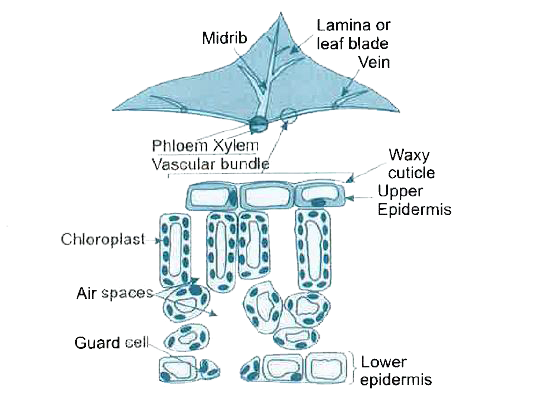what do the chloroplasts contain ?
Step-by-Step Solution:
1. Definition of Chloroplasts: Chloroplasts are specialized cell organelles found in plant cells. They are essential for the process of photosynthesis.
2. Structure of Chloroplasts: Chloroplasts are characterized by a double membrane structure. This means they have an outer membrane and an inner membrane.
3. Presence of DNA: Chloroplasts contain their own DNA, which is why they are referred to as semi-autonomous organelles. This means they can replicate independently within the cell.
4. Chlorophyll: One of the key components found in chloroplasts is chlorophyll, a green pigment. Chlorophyll is crucial because it captures light energy from the sun.
5. Function of Chlorophyll: The primary function of chlorophyll is to facilitate photosynthesis, the process by which plants convert light energy into chemical energy (food).
6. Thylakoid Membrane: Inside the chloroplasts, there is a third membrane system known as the thylakoid membrane. These thylakoids are organized into stacks called grana.
7. Role of Thylakoids in Photosynthesis: The thylakoid membranes are where the light-dependent reactions of photosynthesis occur. They help in the conversion of light energy into chemical energy.
8. Summary of Contents: In summary, chloroplasts contain:
- Chlorophyll (the pigment for photosynthesis)
- DNA (for semi-autonomous replication)
- Thylakoid membranes (for the light-dependent reactions of photosynthesis)
- Chlorophyll (the pigment for photosynthesis)
- DNA (for semi-autonomous replication)
- Thylakoid membranes (for the light-dependent reactions of photosynthesis)
Topper's Solved these Questions
Similar Questions
Knowledge Check
The stroma of the chloroplast contains
AEnzymes required for protein synthesisBEnzymes required for carbohydrate synthesisCDouble stranded circular DNA molecules and ribosomes (70S)DAllof the aboveIn leaves, the ground tissue constitute of this walled parenchymatous chloroplast containing cells and is called __________
AMesophyllBEpidermisCStomatal apparatusDBundle sheath extensionCytochromes
I. dissolve easily into the lipid component of chloroplast membranes.
II. are small proteins that contain a cofactorf , haem, which holds an iron atom .
III. Are losely associated with chloroplast membrances.
IV. are an intergral part of the chloroplasts thylakoid membranes and cannot be removed without destroying the membrane.AIII and IVBI, II and IVCOnly IDI and II
When in plant leaves, chloroplast containing bundle sheath cells surrounds vascular bundles in several layers that anatomy is known as
View SolutionAnswer question numbers (a) -(d) on the basis of your understanding of the following paragraph and the related studied concepts :
If you carefully observe a cross-section of a leaf under the microscope shown in Fig. 6.4, you will notice that some cells contain green dots. These green dots are cell organelles called chloroplasts which contain chlorophyll.
(a) What is the role of these dots that contain chlorophyll.
(b) What is the main difference you see between upper and lower epidermis ?
(c) What is the role of air spaces ?
(d) Name the layer of cells that contain chloroplasts.

View SolutionBacteria do not have chloroplast, but some bacteria are photoautotrophic in nature and perform photosynthesis. Which part of bacterial cell performs this?
View SolutionState True or False: Prosenchyma consists of parenchyma cells that contain chloroplasts and carry out photosynthesis in plants.
View SolutionThe chloroplast in ulothrix is
View Solution
